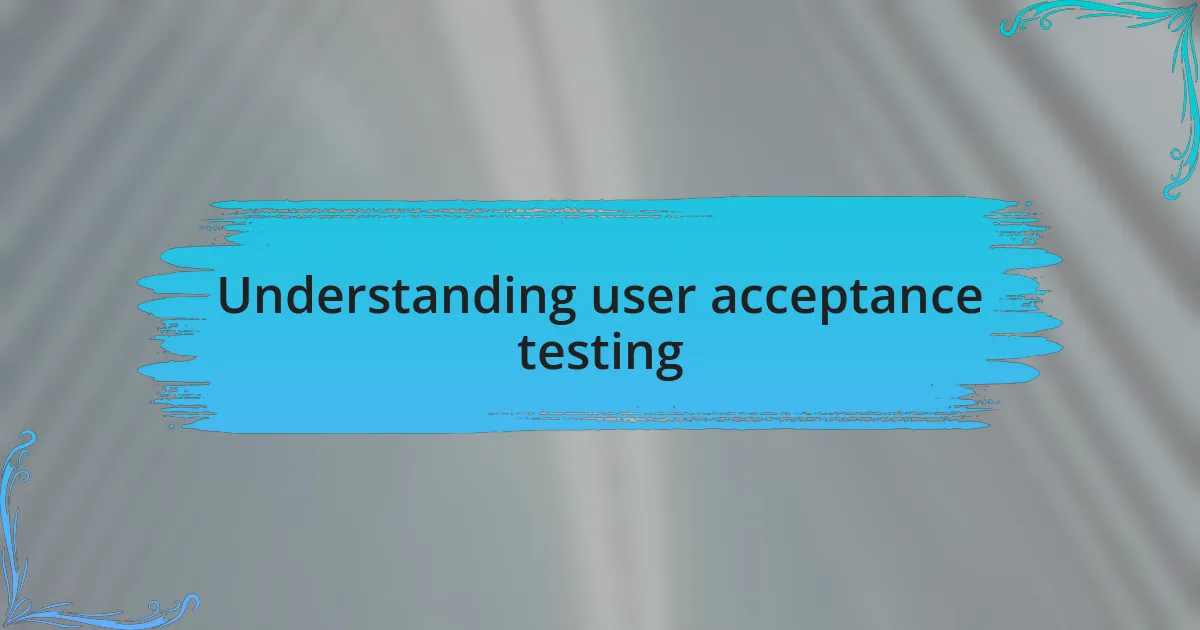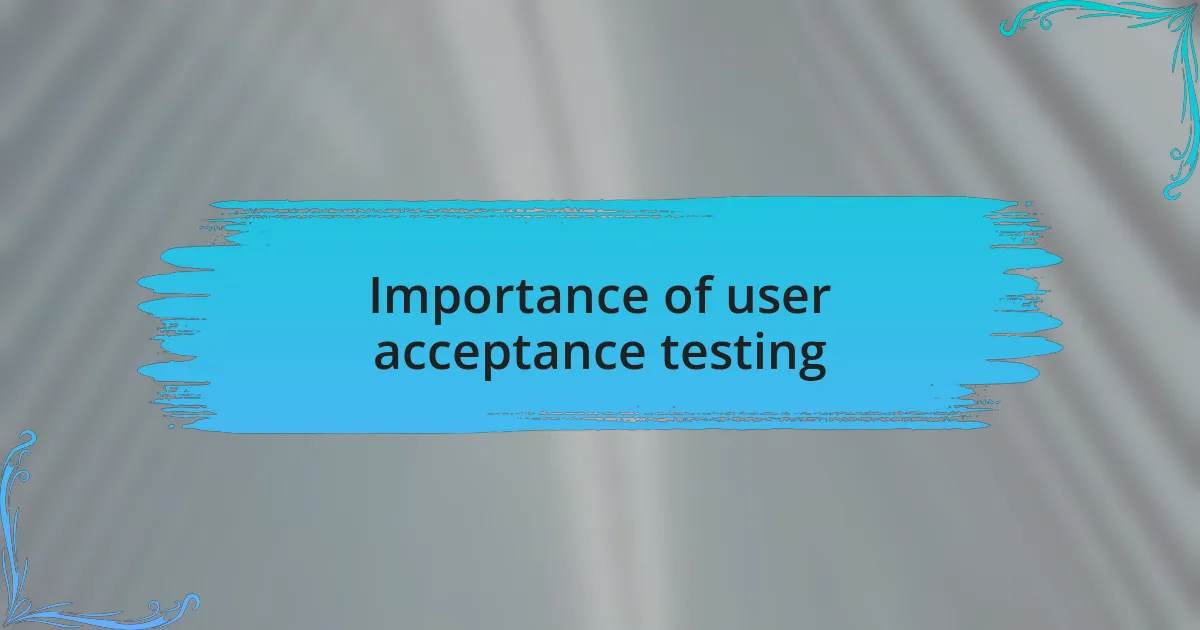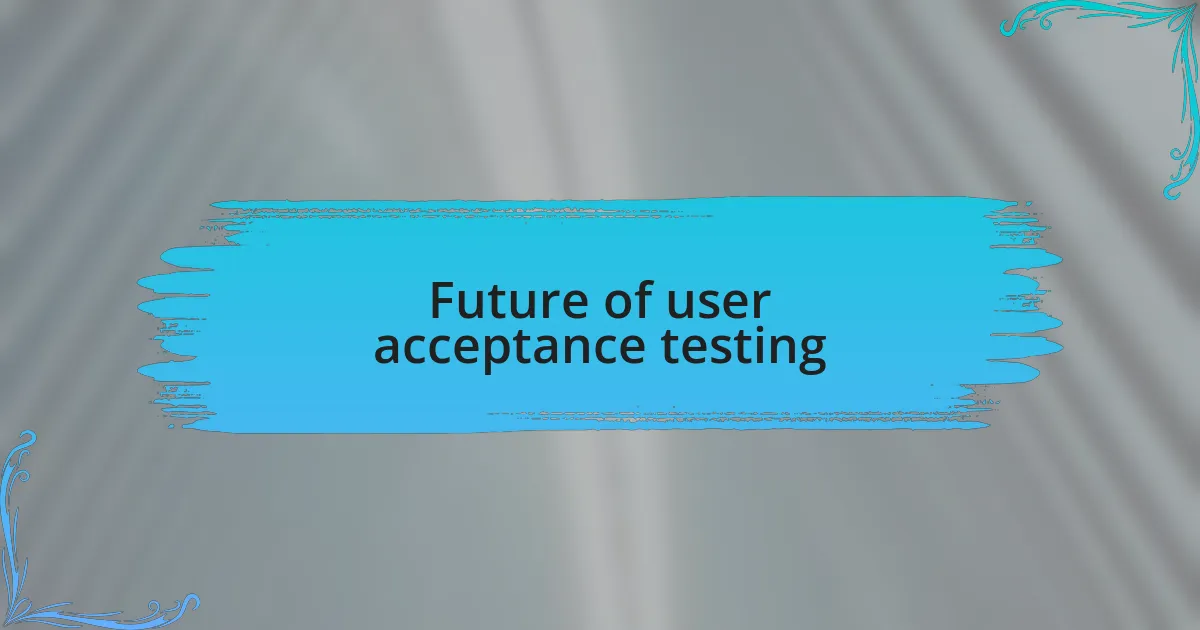Key takeaways:
- User acceptance testing (UAT) reveals critical user insights, bridging the gap between developer assumptions and actual user experience.
- UAT enhances user trust and emotional connection by valuing and acting upon user feedback, thus improving overall product reception.
- Future UAT will incorporate AI and automation, streamlining processes and enabling richer, more inclusive user engagement.

Understanding user acceptance testing
User acceptance testing (UAT) is a crucial phase in the app development process where real users evaluate the product to ensure it meets their needs. I remember the first time I witnessed UAT in action; the feedback from users was both enlightening and a bit surprising. It really drove home the point that sometimes, what we think is user-friendly might not resonate with actual users.
One of the most valuable aspects of UAT is its ability to uncover unexpected issues. For example, during a project I worked on, users pointed out a navigation flow that seemed intuitive to developers but caused confusion. This kind of firsthand insight is irreplaceable, as it highlights the gap between developer assumptions and user experience.
Engaging users to test a product before its official launch can feel daunting, but it’s essential for creating an app that truly serves its purpose. Have you ever used an app that just didn’t click for you? That experience often stems from a lack of user input during testing. Embracing UAT opens the doors to meaningful dialogue with users, allowing for adjustments that lead to a more successful final product.

Importance of user acceptance testing
User acceptance testing is vital because it validates the product against user expectations. I recall a scenario where we launched a feature that seemed like a game changer to us, only to realize after UAT that it was far too complex for our target audience. That moment was a stark reminder that we must prioritize the user experience over technical brilliance.
Another key aspect of UAT is its role in building user trust. When users see that their feedback is valued and acted upon, it creates a sense of ownership over the product. Think about it: have you ever felt more passionate about a product because you knew your opinion mattered? I have, and it truly enhances the user’s emotional connection to the application.
Ultimately, UAT serves as a safety net, catching potential pitfalls before they affect the broader audience. In my experience, the cost of fixing issues post-launch is always significantly higher than addressing them during UAT. So, isn’t investing in that upfront testing a no-brainer for sustainable app development?

Future of user acceptance testing
As we look ahead, the role of user acceptance testing (UAT) is set to evolve with the integration of advanced technologies like artificial intelligence and machine learning. I vividly remember a project where we leveraged predictive analytics to anticipate user behavior; it transformed our testing process by enabling us to focus on areas most likely to impact user satisfaction. This shift will not only make UAT more efficient but will also provide richer insights, leading to more user-centered designs.
In the future, I believe that remote and collaborative testing will become the norm. Reflecting on my own experiences, engaging users from diverse backgrounds in real-time feedback sessions has expanded our understanding of their needs. Have you ever thought about the richness that comes from gathering perspectives across different demographics? It’s a game changer, making our products not just functional, but truly inclusive.
Moreover, automation tools will play a pivotal role in streamlining UAT processes. I often recall how tedious manual testing can feel, and transitioning to automated solutions has significantly cut down our testing time. As we embrace these new tools, UAT will become less about checking boxes and more about fostering genuine user engagement—allowing us to innovate and iterate faster than ever before.